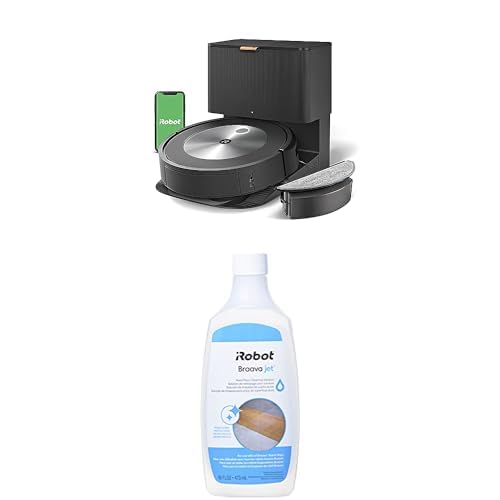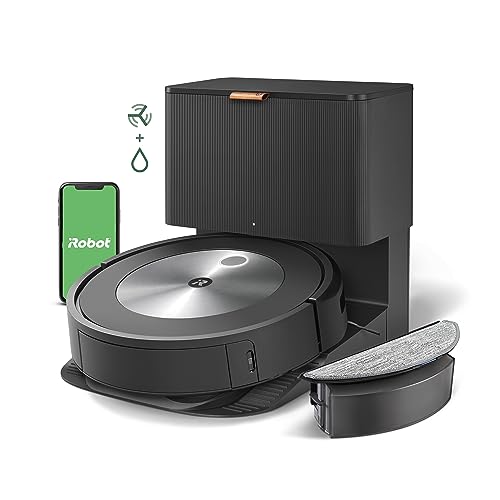Guide To Self Emptying Vacuum: The Intermediate Guide On Self Emptying…
페이지 정보

본문
 What Is a Self-Emptying Robot Vacuum?
What Is a Self-Emptying Robot Vacuum?Many robot vacuums have an integrated dust bin that has to be manually emptied at the end of each cleaning cycle. Self-emptying bases are a premium feature that adds value to the robotic cleaner.
 Are they worth the recurring cost? This review focuses on the Shark EZ robotic vacuum and its self emptying base.
Are they worth the recurring cost? This review focuses on the Shark EZ robotic vacuum and its self emptying base.What is self emptying vacuum (https://pattern-wiki.win/wiki/5_Laws_That_Will_Help_The_Self_Empty_Robot_Vacuum_Industry)-emptying?
Self-emptying robot vacuums are one type of robot vacuum that has an internal storage system, typically in the form of a dustbin that automatically emptys itself when it gets full. This means that there is no need for manual dustbin emptying after every cleaning cycle and cuts down on maintenance time. You can determine when the storage bin is full using the window. These features are offered on models manufactured by iRobot Ecovacs and Shark.
The technology is relatively new and is a desirable feature on a lot of robot vacuums. Certain models are more affordable than you would expect due to their superior capabilities. For example, the Shark RV912S EZ Robot Vacuum is among our top self-emptying vacuums that can be bought for less than $400.
Most robot vacuums come with dustbins which fill up after some cleaning sessions. They must be empty manually before the next cleaning cycle. This can be a lengthy procedure, especially in households where allergens and pet hair build up quickly. Emptying a robotic vacuum is also messy, since you could be required to touch the dirty contents and risk releasing irritants into the air.
Self-emptying eliminates both problems by allowing the robots to automatically transfer dirt and other debris out of their trash bins into an enclosed, larger storage area. This is usually a bag inside the base station, which can be easily removed and emptied as needed. These bags also filter dust particles, capturing them and proving beneficial to allergy sufferers.
Another benefit of the self-emptying system is that it's generally less noisy than most robot vacuums, even when emptying the container. The transfer of debris from the bot to the base may be a bit loud however it's not a huge issue for the majority of people, but it might be a nightmare for children and pets at home.
The top self-emptying robots have a host of other useful features such as Wi-Fi or smart home connectivity so that you can control them using your smartphone or other connected devices, automatic/set run times as well as a mapping feature mop/vacuum switching options, and much more.
How can a self-emptying vacuum function?
A regular robot vacuum uses an internal storage system, which is usually a small dustbin. Based on the size of your house and how dirty your floors are, they is necessary to clean it often. Adding a self-emptying feature to the robot vacuum eliminates this issue by automatically returning to its base to empty the dust bin onboard into a second dust bin. This is often called Clean Base Dirt Disposal (iRobot), Auto Empty Station (Ecovacs) and Self-Emptying Base (Shark).
Many models of robot vacuums with this feature also come equipped with a dock that can be used for mopping, self emptying Vacuum meaning the machine is able to double-duty at home. Some models even have different modes for vacuuming and mopping, allowing you achieve the specific cleaning style you want.
These features are helpful but they can be costly. They are not for everyone. They also add additional steps to the process of installing and using a robotic vacuum, which can be offputting for some consumers.
Shark RV912S EZ Robot Vacuum is a self-emptying robotic vacuum that is still affordable compared to other robot vacuums. It has powerful suction and 3D light scanning. It can also identify objects precisely. Its large base can hold up to 60 days of debris, and it also automatically returns to its dock for charging to empty its own tank when it's filled.
It's not obvious how loud a robot that is able to empty itself can be. While there are sometimes settings available to control the power of the device and the process of emptying can last for a few minutes or so, and it can be quite loud. Some users consider this noise to be a drawback of these devices.
How often does a self-emptying septic tank have to be empty?
Like regular robot vacuum and mop with self emptying vacuums, self-emptying models scour your floors for hair, dust and crumbs before returning to their base to charge. Many self-cleaning models, however, have docking stations which also function as disposal units. They automatically empty the robot's bin into an additional storage container once it's full. You don't need to manually empty a half-liter container after each use, or risk creating an obstruction.
In reality, the docking systems that are used on some self-emptying robots can hold 60 days or more of dirt before being disposed of, meaning that they need to be emptied significantly less often than traditional bots. It is important to note that the transfer process can be noisy and startle pet owners or other pets around. This feature may not be suitable for households that have sensitive ears.
To avoid clogs that could impact the robot's performance you should regularly clear and clean the robot's filter. And you should also check the robot's power button to ensure it's properly plugged in and charged before every use.
Are self-emptying vacuums worth the cost?
Many robot vacuums have self-emptying bins, which eliminate the requirement to empty the bin manually after every cleaning session. These machines are more expensive than traditional robot vacuums, but they save you time and effort by eliminating the need to empty the dust bin of your robot after every sweep.
While a self-emptying robot vacuum might appear to be an expensive item, it could be a great investment when you have a busy house or have pets that shed. It is also a worthwhile investment when you suffer from chronic allergies or live in a place that is dusty.
Self-emptying vacuums operate by docking with a larger base station with an hose that is used to move the particles from the robot's trash bin into the larger receptacle. This prevents the dustbin from overflowing, or becoming blocked, making the vacuum lose suction or smell. In the majority of instances, you'll need empty the receptacle each 30 or 60 days, depending on the frequency you use the device.
The majority of self-emptying vacuums are able to connect to Wi-Fi, which makes them easy to control using tablets or smartphones. Many robots are compatible with Amazon Alexa or Google Home. This allows you to control them with voice commands. This can be especially helpful if you're on a schedule or have a hectic household which makes it easier to keep your home tidy even when you're busy.
In terms of features, most self-emptying vacuums come with high-quality motors for vacuums that allows them to easily pick up dust, pet hair, crumbs, and other debris from hardwood floors and carpets with low pile. They can also be programmed to automatically vacuum and mop on the basis of a set schedule, which can make your life much easier.
The iRobot J7+ is the top robot vacuum for self-emptying mapping the boundaries of virtual borders, and detecting obstructions. This powerful vacuum is the top in its class and will not let you down. If you're on a tight budget however, the Shark IQ XL is an excellent alternative that offers many of the same features, but at an affordable price.
- 이전글What NOT To Do In The Motorcycle Accident Compensation Industry 24.05.01
- 다음글20 Trailblazers Leading The Way In Pod Coffee Machine 24.05.01
댓글목록
등록된 댓글이 없습니다.

